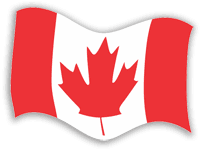|
In 2009, Minister of Citizenship, Immigration and
Multiculturalism Jason Kenney announced the end of the nation’s
heritage languages programme. He told a journalist that “I think
it’s neat that a fifth-generation Ukrainian Canadian can speak
Ukrainian — but pay for it yourself.”
A Liberal Member of Parliament, Borys Wrzesnewskyj, responded by
accusing Kenney of “fundamentally disagree(ing) with the intent
of the (multiculturalism) legislation that supports his
portfolio.” In other words, as Ottawa columnist Andrew Cohen put
it, “Championing a more integrated country is often called
intolerant, even racist, as if the conversation were taboo.”
Multiculturalism, in other words, is a hot issue.
Those who created Canada’s 1971 multiculturalism policy had
thought in terms of language and culture. But as immigration
patterns shifted, as more visible minorities came to Canada, new
concerns such as obtaining employment, housing and education and
fighting discrimination, forced a shift in policy thinking.
Equality through the removal of racial barriers became the main
focus of multicultural programs and race relations policies and
programs were put in place to combat racial discrimination.
Then in 1982, Canada changed its constitution, put the Canadian
Charter of Rights and Freedoms in it, and stated that “This
Charter shall be interpreted in a manner consistent with the
preservation and enhancement of the multicultural heritage of
Canadians.” Multiculturalism, therefore, was now as permanent as
the Constitution, and the Constitution is very hard to change.
The melting pot now was officially dead and gone.
At the same time, the Charter also declared that “Every
individual is equal before and under the law and has the right
to equal protection and equal benefit of the law without
discrimination and, in particular, without discrimination based
on race, national or ethnic origin, colour, religion, sex, age,
or mental or physical disability.” Discrimination was against
the law.
Parliament soon passed the Multiculturalism Act in 1988. The act
acknowledged multiculturalism as a fundamental characteristic of
Canadian society that was to assist in the preservation of
culture and language, to reduce discrimination, to enhance
cultural awareness and understanding and to promote culturally
sensitive change at the federal level. Thus the act sought to
increase minority participation in Canada’s major institutions
by bringing diversity into them as natural and normal. All this
was good and proper.
But what the act meant in practice was the establishment of
quotas, preferences in hiring and active recruitment schemes for
visible minorities and recent immigrants. This change took place
at the same time as women were receiving special treatment in
hiring and after years of preferential hiring for francophones.
It is fair to say that there was and remains resentment in the
segments of the population that felt themselves newly
discriminated against by government. Whites of British origin
especially were unhappy, but French-speaking Canadians also
worried that immigrants might change their culture.
What worried these unhappy Canadians was the fear that
government was not only not watching as the nation changed, but
that it was favouring the newcomers with its preferences and
policies. White Canada, both English-and French-speaking, saw
Canada’s population altering with great speed, and it worried
for the future of its way of life. Would the new immigrants from
Guangdong and Manila, from Jamaica and the Punjab, be able to
integrate into Canadian life? Would those who choose to settle
in Quebec learn French? Would new immigrants understand the
history and accept the democratic ideas that have shaped
Canada’s political life? How much would older Canadians need to
change? That such questions can still be asked suggests
widespread concern about the multiculturalism goals of 1988.
Change is always difficult, and the fear of change is
understandable. It will, of course, become even more difficult
for all Canadians, immigrants and the established alike, to deal
with and accept if the economic recession of 2009-10 is
long-lasting. What is clear to everyone is that Canada wants and
needs immigrants and, while the nation has its share of racists,
very few Canadians want to close the door to newcomers on
grounds of race or religion.
So, who are we now? It is impossible to doubt that Canadians
today are a multicultural nation, increasingly so, and
especially in the three largest cities of Toronto, Montreal, and
Vancouver. But do they believe in multiculturalism? To a
substantial extent they do believe, though very uneasily. Beyond
Toronto and Vancouver, many English-speaking Canadians worry
that multiculturalism weakens their already shaky sense of
nationality, and outside Montreal, most French-speaking
Canadians seem to fear that it threatens their hard-won
francophone language and culture. For their part, most new
Canadians simply want to be accepted not as Somali-Canadians or
Filipino-Canadians, but as Canadians.
What is clear is that Canadians, new and old, still want to
believe that they can make Canada work. The country’s reputation
for tolerance matters to most Canadians, and there is a
willingness to try to maintain it. But it won’t be easy, and
there will be many bumps in the road as Canada moves deeper into
the 21st Century.
Historian J.L. Granatstein is editor of The Canadian Experience.
He writes in Canadian politics, foreign policy and defence.
Next Instalment: Confederation
The Canadian Experience is a 52-week
history series designed to tell the story of our country to all
Canadians. Sponsored by Multimedia Nova Corporation and
Diversity Media Services partners, the series features articles
by our country’s foremost historians on a wide range of topics.
Past articles and author bios are available at
http://www.cdnexperience.ca. The Canadian
Experience is copyright ©2010-2011 Multimedia Nova
Corporation. |
List of
published "Canadian Experience" articles |

 #31 Multiculturalism and its Problems
#31 Multiculturalism and its Problems
